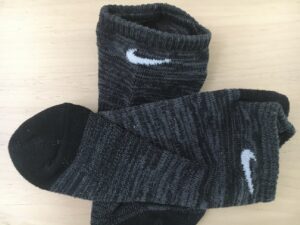
Designing Secondary Meaning Surveys or Inferring Secondary Meaning from Likelihood of Confusion and Genericness Surveys.
Simply Association. Secondary meaning is simply described as association. Secondary meaning can be directly measured in a stand-alone survey. Or plaintiffs can infer (and defendants refute) secondary meaning from likelihood of confusion or genericness surveys. Should a party rely on inferences or separately test secondary meaning to prove or disprove association or acquired distinctiveness? It depends. It depends on the legal issues involved in the case and which side is proffering the evidence as defendants often conduct surveys to counter plaintiff’s evidence.
When consumers associate the mark with a “one company” brand name, secondary meaning exists. If consumers respond that the mark or trade dress is related to “more than one company,” secondary meaning loses distinctiveness. There is no consensus in the courts for the percentage to establish acquired distinctiveness. To establish secondary meaning, 50% or more responses of “one company” is generally acceptable, although lower percentages have been accepted.[1] Cross complaints challenging acquired distinctiveness may find a stand-alone survey more powerful.
How to Operationalize Secondary Meaning in a Stand-Alone Survey. A consumer survey expert operationalizes the secondary meaning test for a word, name, symbol, device or trade dress in conjunction with the trial team. In the secondary meaning study, first isolate the trademark or trade dress. It is critical to mask all the nonfunctional portions when measuring the trade dress. Simply modify the basic question, “Do you associate [the claimed word, trademark, trade dress] with the product identification of one, or more than one, company?”, for secondary meaning in a stand-alone survey. Experts designing response options, add “no company” and “don’t know or no opinion” options. A follow up question such as “Why do you say that?” requires respondents to explain their answers. Rinse, then repeat the survey with a control group inserting a different, non-infringing [product] to eliminate guessing or other noise effects.
Assessing Association from Genericness Surveys. While likelihood of confusion studies use potential consumers, genericness studies use the general population. One does not need to purchase Nike shoes or socks to recognize or associate the swoosh with one company. Genericness surveys test whether a [trademark, trade dress] is generic or a brand name. In a precedent setting survey, a substantial majority of the public believed that Teflon is a brand name made by one company.[2] While generally, 50% plus of the general population calling a product [e.g., Teflon] as “made by one company,” establishes a product as a brand name, the exact percentage to determine whether a product is generic or a brand name varies.
Assessing Association from Likelihood of Confusion Surveys. Depending upon the response level, one could infer acquired distinctiveness from the “one company” or “more than one company” responses in a Squirt format.[3] In an Eveready format respondents are asked who puts out this product. [4] For likelihood of confusion to exist, a 15-20% or higher net confusion rate is required to establish confusion. When the net confusion rate is high, consumers are attributing the mark or trade dress to be related to a source, sponsorship or affiliation.
To Pair or Not to Pair Studies. It may be difficult to argue both likelihood of confusion and secondary meaning from the same study, if there are conflicting purposes in designing the study. In a likelihood of confusion survey, company names are sought when asked about source, affiliation or sponsorship. For secondary meaning one does not ask the “who” question because appearance is tested for association, rather than the name.
For the plaintiff claiming likelihood of confusion, a Squirt study may suppress secondary meaning. When asked if the preceding product is from the same company as any of the products in the array, acquired distinction may be defeated. When Squirt studies add the follow up “why” question, a demand characteristic toward naming more than one company name emerges. Likelihood of confusion could exist and secondary meaning could be called into question with a substantial number of multiple companies named.
A stand-alone secondary meaning survey relies on a sufficient number of consumers answering “one company” or “more than one company.” The plaintiff establishes association if a sufficient number of consumers choose “one company”. The defendant prevails if a sufficent number of consumers choose “more than one company” as it demonstrates a lack of distinctiveness.[5] Depending on the legal issues and countersuits, it may be best to design a secondary meaning survey separate from a likelihood of confusion survey when establishing or disputing acquired distinctiveness.
[1] Jacoby, J. (2013). Cleaning, Aggregating, Analyzing, Evaluating, and Reporting Data, Trademark Surveys, Vol. 1, Designing, Implementing, and Evaluating Surveys, ABA Section of Intellectual Property Law, Chicago, IL, p. 891.
[2] E.I. DuPont de Nemours & Co. v. Yoshida Int’l, Inc.
[3] Squirtco v. Seven-Up Co., 628 F.2d 1086, 1089 n.4 (8th Cir. 1980).
[4] Union Carbide Corp. v. Ever-Ready Inc., 392 F. Supp. 280, 292 (N.D. Ill. 1975), rev’d, 531 F.2d 366 (7th Cir. 1976).
[5] Vincent N. Palladino, (2012). Secondary Meaning Surveys, chapter in Trademark and Deceptive Advertising Surveys, Law, Science, and Design (Diamond, S.S., and Swann, J.B., Eds.) ABA Section of Intellectual Property Law, p. 85.
